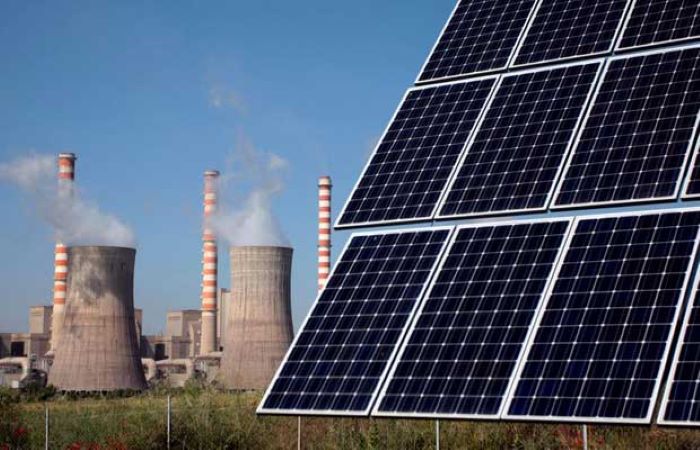A new report shows that financial institutions in India are also progressively turning away from coal, in line with global energy finance
Project financing for new coal power projects has recorded a precipitous decline for a second straight year. This is the revelation reported in a new analysis of loans in India’s power sector- the Coal vs Renewables Financial Analysis 2019. According to the analysis, which looked at 50 project finance loans disbursed to 43 power projects in 2019, financing in the power sector was heavily skewed towards renewable energy projects with only two coal power projects securing loans in the year. Coal power financing, as per the report, has fallen staggeringly to just 1.8% of the loan amounts that went towards coal power in 2017. Lending to renewable energy projects saw a minor contraction of 6% YoY even though it received 95% of the total lending to energy projects.
According to the analysis, conducted by the Centre for Financial Accountability and Climate Trends, 2019 saw two coal projects (total capacity of 3.06GW) receiving ₹1100cr (US$190mn) in project finance. In 2018, five coal-fired projects with a combined capacity of 3.8GW received ₹6081cr (US$850mn). By contrast, ₹60,767cr (US$9.35bn) was lent to 17GW of coal projects in 2017. Worryingly, construction of new coal-fired capacity more than doubled to 8.8GW compared to 2018. At the same time, the Indian government has halted construction of 19.3GW of planned thermal power capacity due to financing difficulties.
“A significant drop in project finance to coal means that financial institutes are beginning to realise the associated financial and reputational risk in investing in coal” said Joe Athialy, Executive Director at CFA. “Our policy makers need to read the writing on the wall. Pushing healthy commercial banks into financing unviable coal projects in India and abroad will only lead to more stress in the financial sector” Athialy added.
Of the total lending to coal in 2019, ₹700cr went towards refinancing of JSW Energy’s Barmer power plant in Rajasthan. Barmer project was also refinanced in 2018. Refinancing of projects almost always happens to change term conditions such as interest rates or maturity date. JSW Energy is among the progressive private power generation companies that announced a moratorium on construction of new coal power plants and focus on expanding their renewable energy portfolio. The remaining ₹400cr (US$91mn) went towards financing NTPC’s new coal project in Barh, Bihar. The project’s engineering, procurement and construction responsibilities have been awarded to Doosan Heavy Industries. NTPC, India’s largest coal power operator, recently announced a moratorium on construction new greenfield coal power plants.
Forty-one renewable energy projects (total capacity of 5.15GW) received a cumulative of ₹22,971cr (US$3220mn). Lending to wind energy dropped 30%, while lending to solar increased by 10% compared to 2018. Solar dominated project finance loans to renewable energy in 2017, 2018, and 2019. However, due to the financial stress in India’s power distribution companies (Discoms), investment in renewable energy sector has been impacted. Discoms owe generation companies ₹116,340cr (US$16bn) of which US$1.1bn is owned to renewable energy generators.
Analysts point to tariff renegotiations in numerous states, the curtailment of renewables, and a prolonged monsoon as factors contributing to this slowdown. Despite this, solar projects in Rajasthan, Andhra Pradesh, and Karnataka secured ₹5,641cr, ₹3832cr, and ₹2511cr respectively. While these three are also the top states in terms of total RE finance received, Gujarat has the top spot in terms of finance for wind projects with loans worth ₹2076cr going to the sector in the state in 2019. The analysis, based on numbers cross-checked in the Bloomberg Professional, IJ Global and Thomson Reuters databases, is not exhaustive but still offers a succinct snapshot of trends surrounding lending by financial institutions towards coal and renewable energy project.
Climate Trends is also a funding partner of Carbon Copy.
About The Author
You may also like
Why India’s Clean Cooking Revolution Must Be Electric
Clean Energy Push Would Halve Warming Rate by 2040: Report
India Pushes for Critical Minerals Circularity and Collective Action on Climate at G20
Lula Pitches Fossil Fuel Phase-Out at COP30, But Can a Divided World Agree?
Energy Transition Doesn’t Require Large Climate Finance: Report

